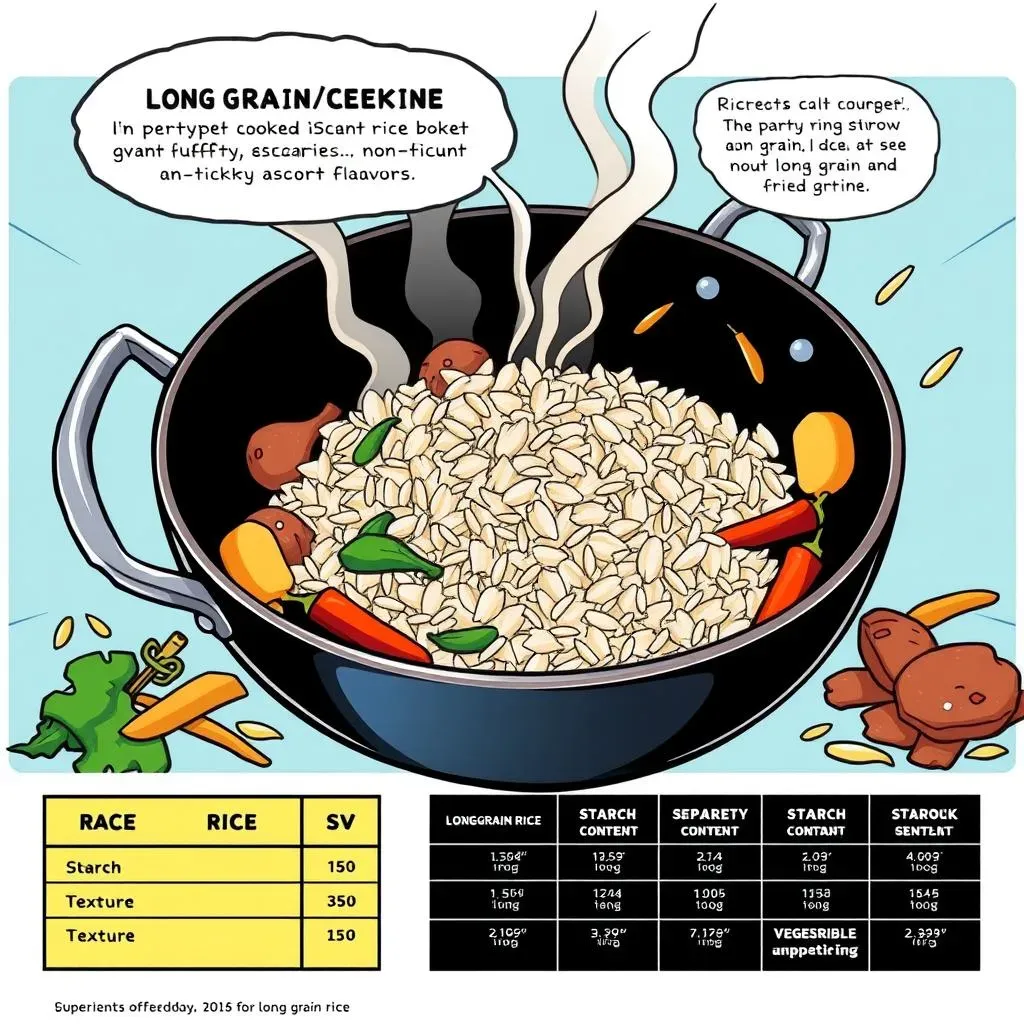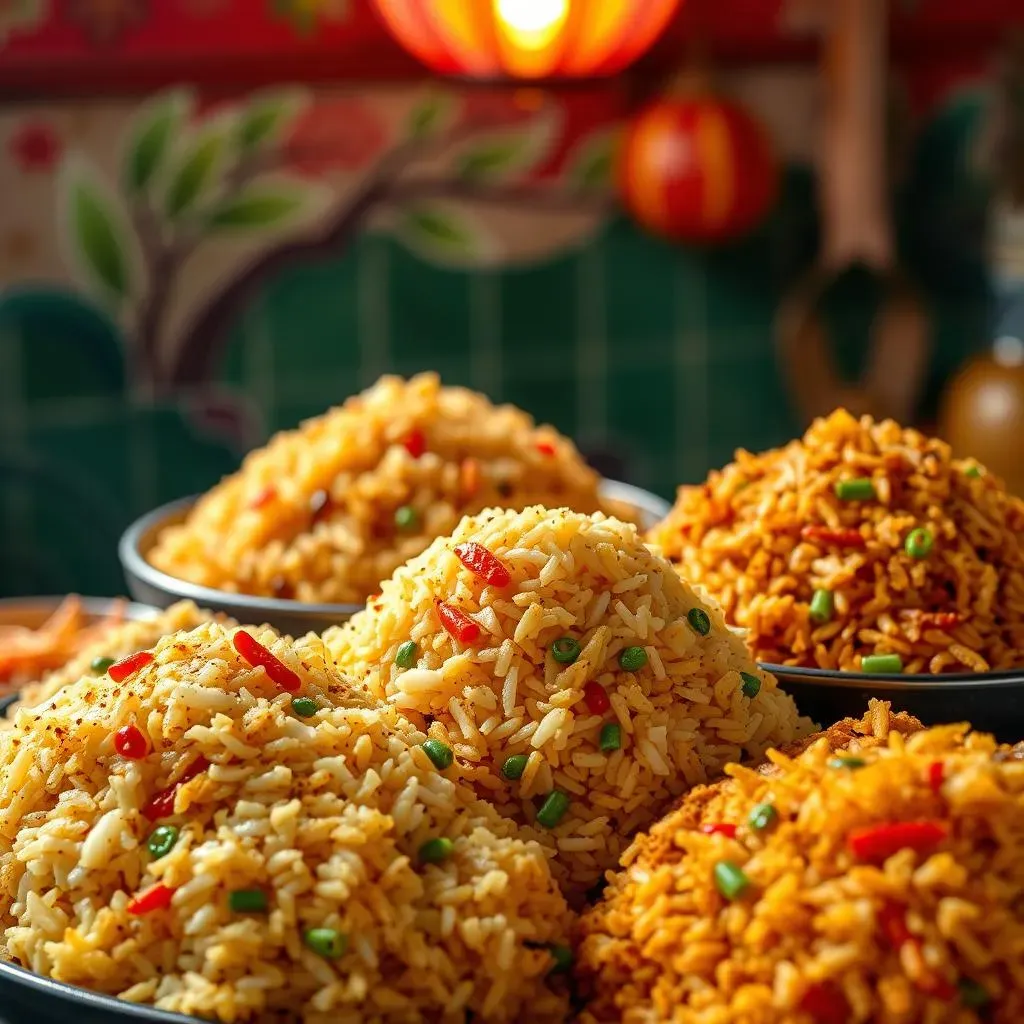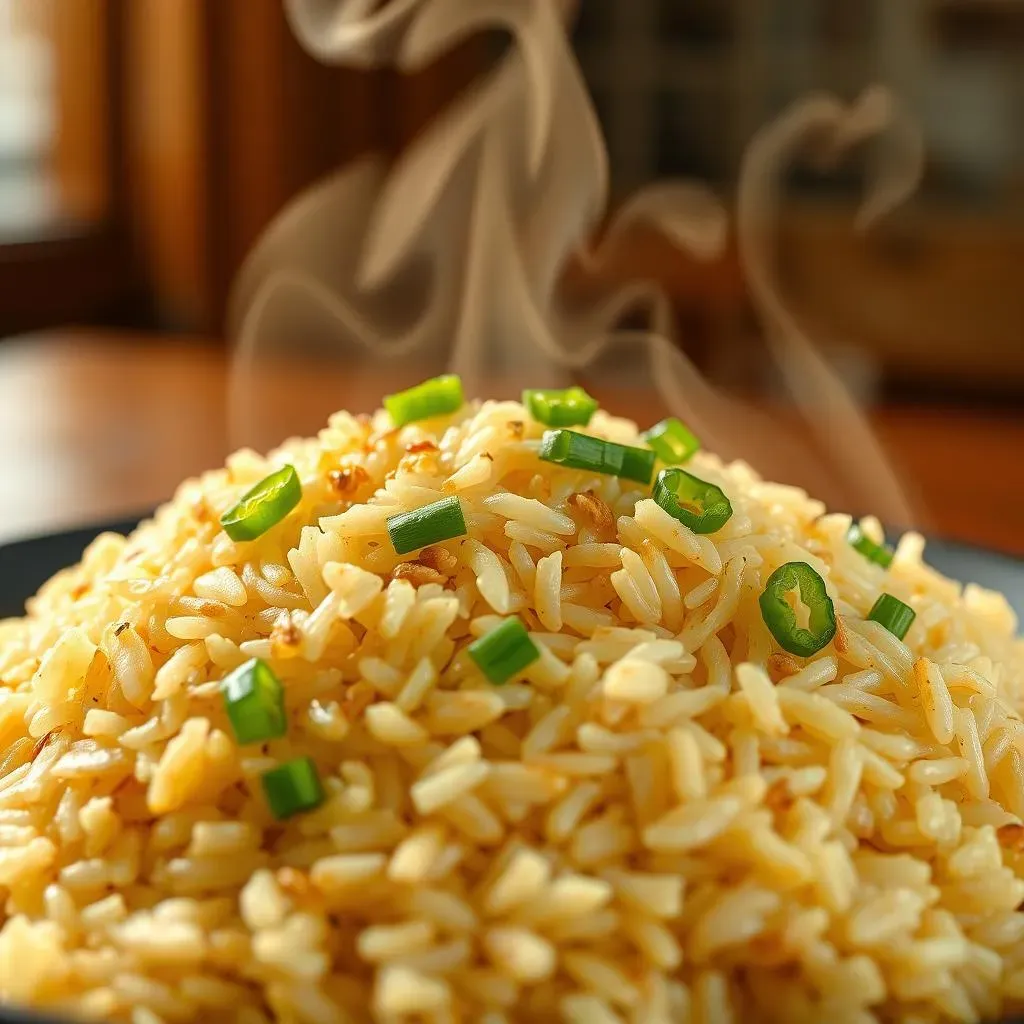Table of Contents
Ever wonder why your homemade fried rice doesn't quite stack up to your favorite takeout spot? The secret isn't some mystical wok technique, but rather, the rice! I've been on a quest to perfect this dish, and let me tell you, choosing the correct grain is half the battle. Forget mushy, clumpy messes; we're talking fluffy, flavorful fried rice that rivals any restaurant. We'll be tackling the burning question: what is the best rice for fried rice?. I'll walk you through why long grain rice is the absolute MVP, which other varieties you can use in a pinch (and which to avoid like the plague), and some key tips to cook your rice to perfection before it ever hits the pan. Get ready to level up your fried rice game – it's going to be delicious!
Why Long Grain Rice is the King for Fried Rice

Why Long Grain Rice is the King for Fried Rice
The Starch Factor
Okay, so why is long grain rice the undisputed champion? It all boils down to starch. Short-grain rice, like the stuff you'd use for sushi, is loaded with it. When cooked, that starch makes the rice sticky and clumpy – which is great for sushi but a total disaster for fried rice. We want separate grains, each coated in deliciousness, not a big, sticky rice ball. Long-grain varieties like jasmine or basmati have less starch. This means they stay fluffy and separate after cooking, making them perfect for soaking up all those tasty flavors in your wok.
Texture and Flavor Absorption
It's not just about the lack of stickiness, though. Long-grain rice also has a firmer texture, which is ideal for stir-frying. The grains can withstand the heat and constant tossing without turning to mush. Plus, the slightly drier nature of cooked long-grain rice helps it to absorb the flavors from the oil, soy sauce, and other ingredients you're using. Think of it like a sponge, ready to soak up all that savory goodness. It’s the difference between a soggy mess and a beautifully textured, flavorful masterpiece. I've tried it with short grain, and trust me, it's a lesson you only need to learn once.
Rice Type | Starch Content | Texture | Best Use |
|---|---|---|---|
Long Grain (Jasmine, Basmati) | Low | Fluffy, Separate Grains | Fried Rice, Pilafs |
Medium Grain (Arborio) | Medium | Creamy, Slightly Sticky | Risotto |
Short Grain (Sushi Rice) | High | Sticky, Clumpy | Sushi |
Exploring Different Types of Rice for Fried Rice: Which Ones Work (and Which Don't)

Exploring Different Types of Rice for Fried Rice: Which Ones Work (and Which Don't)
The Good, the Bad, and the Sticky
Alright, so we've established that long-grain rice is the gold standard, but what if you're staring into your pantry and all you have is something else? Don't panic! There are a few other types of rice that can work in a pinch, but with some caveats. Medium-grain rice, like the kind you might use for paella, can be used, but you have to be extra careful with the cooking process. It has more starch than long grain, so you'll need to make sure it's not overcooked or it will turn into a sticky mess. It's not my first choice, and I wouldn't recommend it for beginners, but it's a possibility if you're in a bind. Then there are the "no-go" options, like short-grain sushi rice. This stuff is basically glue when cooked, and it will create a clumpy, gummy fried rice that's not going to be enjoyable. Trust me, I've been there – it’s not a pretty sight.
Jasmine vs. Basmati: A Battle of the Grains
Now, let's talk specifics about long-grain rice. You've got two main contenders: jasmine and basmati. Both are excellent choices, but they have slight differences. Jasmine rice is known for its delicate floral aroma and slightly sticky texture, while basmati tends to be a bit drier and has a nuttier flavor. Personally, I lean towards jasmine for fried rice because I like the subtle stickiness, which helps the grains cling together without being clumpy. But honestly, both will work great, and it often just comes down to personal preference. It's like choosing between two different types of delicious chocolate – you can't really go wrong either way.
Rice Type | Aroma | Texture | Flavor | Best for Fried Rice? |
|---|---|---|---|---|
Jasmine | Floral | Slightly Sticky | Subtle Sweetness | Excellent |
Basmati | Nutty | Drier, Separate Grains | Nutty | Excellent |
Medium Grain | Mild | Slightly Sticky | Mild | Okay (with caution) |
Short Grain (Sushi) | Mild | Very Sticky | Mild | Avoid |
How to Cook Rice Perfectly for the Best Fried Rice Results

How to Cook Rice Perfectly for the Best Fried Rice Results
Day-Old Rice is Your Best Friend
Okay, so you've got your long-grain rice, but hold up! Don't cook it right before making fried rice. The real secret? Day-old rice. Freshly cooked rice is too moist, and it’ll turn into a mushy mess when you try to fry it. Cooking the rice a day ahead of time allows it to dry out, which is absolutely essential for achieving that perfect, separate-grain texture. I usually cook a big batch of rice the day before I plan on making fried rice. It's like a little meal prep hack that pays off big time.
The Cooking Method Matters
When you're cooking the rice, whether it's for today or tomorrow, the cooking method matters. My go-to is the stovetop method. I rinse the rice thoroughly under cold water until the water runs clear, this gets rid of excess starch. Then, I use a 1:1.5 ratio of rice to water – for every cup of rice, I use 1.5 cups of water. Bring it to a boil, then reduce the heat to low, cover, and let it simmer for 15 minutes, or until all the water is absorbed. Once it's done, fluff it with a fork and let it cool completely before storing in the fridge. Some people swear by rice cookers, and those are fine too, just make sure you don't overcook it!
Step | Description | Why it Matters |
|---|---|---|
Rinse Rice | Rinse under cold water until clear | Removes excess starch, prevents stickiness |
Water Ratio | Use 1:1.5 ratio (rice to water) | Ensures proper cooking and texture |
Cooking Time | Simmer for 15 minutes (or until water is absorbed) | Cooks rice thoroughly |
Cooling | Let rice cool completely before refrigerating | Dries out rice, perfect for frying |
Cooling and Separating
Once your rice is cooked and cooled, it’s time to get it ready for the wok. If you find that the rice has clumped together while cooling, gently break it up with your hands or a fork before adding it to the pan. You want individual grains, not a solid mass. This step is crucial. I've had some batches of rice that ended up a bit too dense, and a little gentle separation was all it needed. It’s like giving each grain a little breathing room to get crispy and flavorful. And there you have it – perfectly cooked, day-old rice, ready to be transformed into an amazing fried rice!